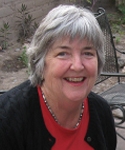The European Psychiatric International Congress, held in Madrid last month, drew behavioral health professionals from around the world, including Herbert Schwager, PhD, a clinical psychologist from the town of Willow, Alaska.
Dr. Schwager was invited to the prestigious gathering to present his paper on “The 21st Century House Call.” The paper summarized his research comparing the efficacy and patient satisfaction of face-to-face psychotherapy sessions with tele-behavioral medicine sessions, with patient and therapist meeting via secure video conference sofrware.
Dr. Schwager’s study involved 400 patients. Two hundred were followed via tele-behavioral medicine, and the other 200 in face-to-face meetings. Patients were studied over a two-year period.
The study found that in most cases, patients preferred the tele-behavioral medicine approach. It also found that tele-behavioral medicine was equally, if not more, effective than traditional face-to-face, and much more convenient than traditional face-to-face.
“And the information, from a behavioral medicine point of view, that we are able to glean just by doing this treatment with the patient at home is information that we absolutely couldn’t get in an office visit,” Dr. Schwager said.
In addition, “Our dogs get to know each other.”
It was Dr. Schwagers’s skepticism that sparked his interest in telemedicine, about 20 years ago. The Arizona Telemedicine Program was getting started at the University of Arizona in Tucson, and its founding director, Ronald S. Weinstein, MD, made a trip to Payson, a town in northern Arizona, where Dr. Schwager lived and practiced behavioral medicine. Dr. Weinstein wanted Payson Regional Medical Center to sign on as a charter facility of the ATP.
“I thought, this can’t possibly work,” Dr. Schwager recalled. “And it was my skepticism that motivated me to volunteer on behalf of the medical staff to go to the training sessions at the university.”
He was skeptical, he said, because he did not think patients would like talking to a computer screen. He quickly learned that was not the case.
His practice gradually evolved from one that required patients to drive for miles across country roads to get to his office, to one where “I was virtually a guest in the patient’s home.”
The move to Willow, Alaska, with a population of 300 to 400 full-timers, was triggered by a colleague who lived in Anchorage, about three hours south of Willow. The colleague had a patient who spent winters in warmer Arizona, and asked Dr. Schwager to care for that patient during those months. “We established a great relationship, and when he returned to Anchorage, we set up a portal in my colleague’s office so I could still see him when he was in Alaska.
 In 1999, Dr. Schwager was invited to speak at a conference in King Salmon, Alaska. He and his wife, Tina, had an extra day before they returned to Arizona, so they got in touch with the patient and his wife, who showed them a 5-acre piece of property they wanted to sell, in Willow.
In 1999, Dr. Schwager was invited to speak at a conference in King Salmon, Alaska. He and his wife, Tina, had an extra day before they returned to Arizona, so they got in touch with the patient and his wife, who showed them a 5-acre piece of property they wanted to sell, in Willow.
“We weren’t looking for property anywhere, much less Alaska,” Dr. Schwager said. They stood in awe of the landscape: virgin forest and a private lake. “My wife turned to me and said, ‘You know, if we do this, we’ll both live 20 years longer.’ So we made them an offer that we were certain they would refuse, and they didn’t, and so we had five acres, and it was just going to be a place where we’d come up and spend a couple of weeks in the summer, as a vacation.”
Telemedicine technology continued to develop in the 49th state, and super-fast 256K DSL and desktop videoconferencing became available.
“We got to the point where we were here six months and in Payson six months, so I got licensed in Alaska and started seeing Alaska patients, and my Arizona practice remained solid, and so we built a home where we could stay instead of the little 1972 travel trailer that we’d been using,” Dr. Schwager said.
“And we just decided – like Tina said, we’ll live 20 years longer – so we moved permanently to Willow.” That was 2010.
“I still continue my Arizona practice. I still have a physical office in Payson, and I still have a relationship with the Arizona Telemedicine Program.” He practices in collaboration with Scottsdale, Arizona, psychiatrist Sue Sisley, MD, who also sees his patients via telemedicine, so she can prescribe medications when necessary.
“Telemedicine has been a wonderful career-changer and life-changer for me,” Dr. Schwager said. “I’ve made three totally failed attempts at retirement. And it’s always because of a new plan or a new idea with telemedicine.”

